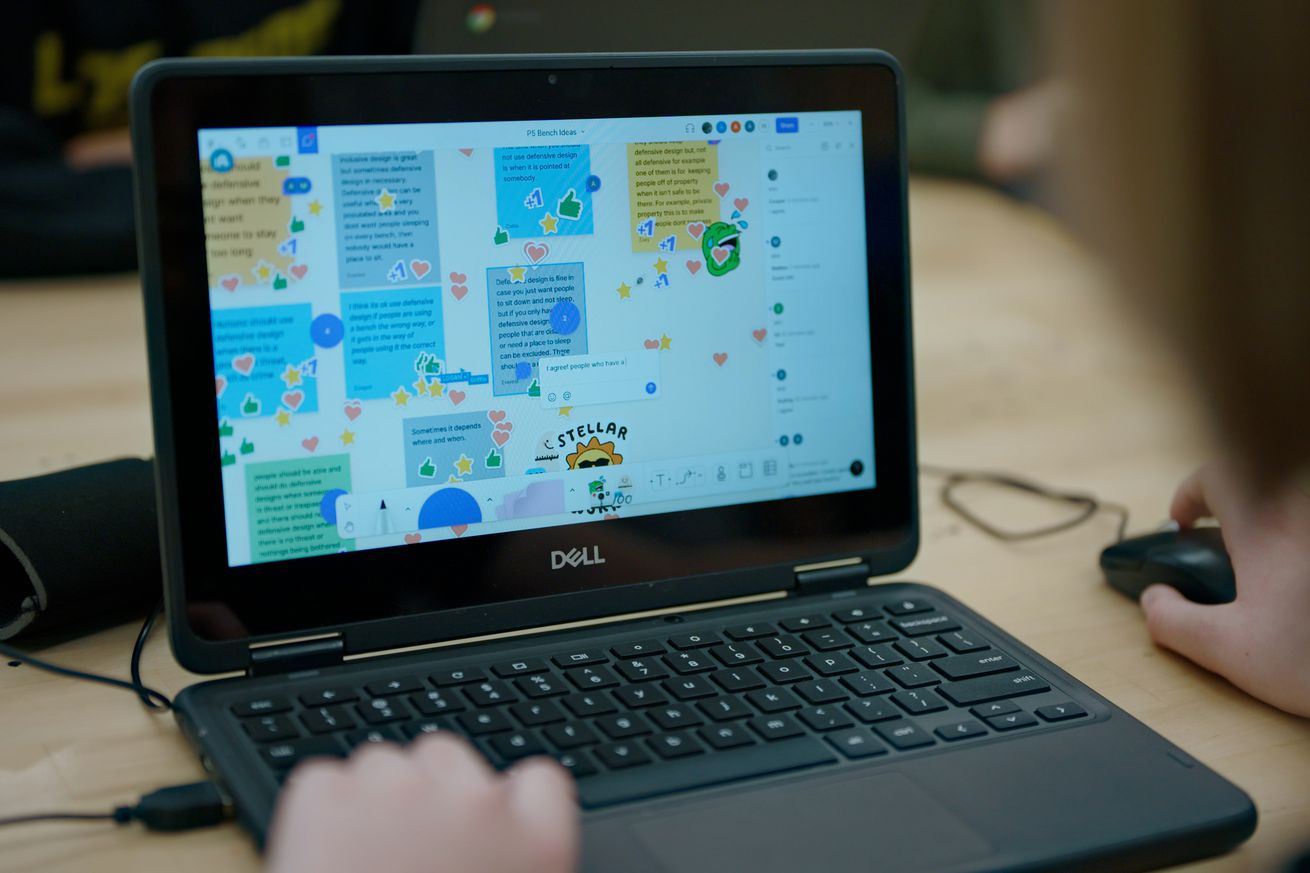
Figma’s design tools are now free on Chromebooks for all US school students
Figma is expanding its partnership with Google for Education in a bid to introduce more school-age students to its product design and collaboration platforms. Announced during the Config event on Wednesday, June 21st, all K-12 students across the US can now access Figma for free on education Chromebooks. Figma is also expanding its educational partnership with Chromebooks outside of the US, starting with Google schools in Japan.
Today’s announcement effectively opens up the beta program that Figma released last year, which was initially limited to select US high schools. As with the beta, students will have access to both Figma (the company’s flagship product design platform) and FigJam, Figma’s collaborative whiteboarding app. Figma’s Google program is only available on Chromebooks, though the company said that schools using non-Google systems can apply for access on an individual class basis.
The program provides students and educators with free access to Figma’s Enterprise tier
While Figma already provides free account tiers, these restrict users to a limited number of files and features. This offering for educational markets gives students and educators access to the company’s Enterprise tier — which typically starts at $75 a month per editor — without paying a dime. The Enterprise tier for Figma and FigJam is the company’s most powerful offering, allowing large groups of students to collaborate at scale. It also grants educators full control over their Figma environments to ensure student safety and support class management.
The Chromebook-specific perks of this partnership allow school admins running Google Workspace for Education to deploy and manage Figma to numerous Chromebooks with a few clicks, directly within the Google Admin console. And given how popular Chromebooks are in educational settings (largely because they’re cheap, cloud-based, and easy to use), it’s not unreasonable to expect schools to have some lying around.
Explaining why Figma and Google are introducing kids to the same product design tools used by industry professionals is another matter entirely. As children show a remarkable aptitude for adapting new technologies (watching how quickly they can navigate a new gadget can be a humbling experience), Figma believes that introducing them to its platform at a young age can help them develop early technical skills they can apply in the future. But both applications can also be used in a variety of other ways in classroom environments — such as recapping books, learning new vocabulary terms, and planning classroom debates.
“We knew giving students access to industry-standard design software would help them build foundational skills for the future — learning how to problem solve, think iteratively, collaborate with others, and build empathy,” said the company in a blog post announcing the expansion. “By bringing Figma’s infinite canvas and design tooling to Chromebooks, students could engage more deeply with their work and more effectively demonstrate what they know visually.”
This is also a nice balance between online and in-classroom learning. This hybrid approach could benefit children who struggled with changes to their learning environment during the covid pandemic, encouraging them to collaborate and interact with their peers on projects whether they’re seated beside them or at home. Some educators would agree with that, at least according to Figma — the company said that teachers have praised the platform for helping students who are “hungry for connection after years of remote learning.”

